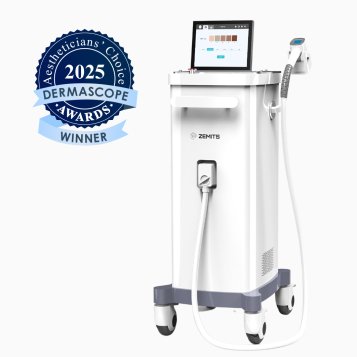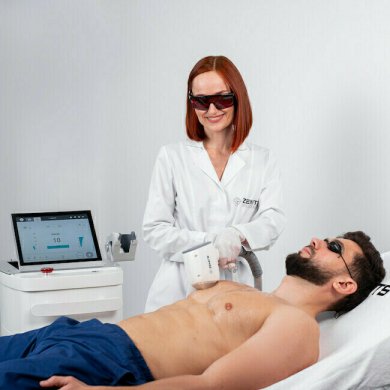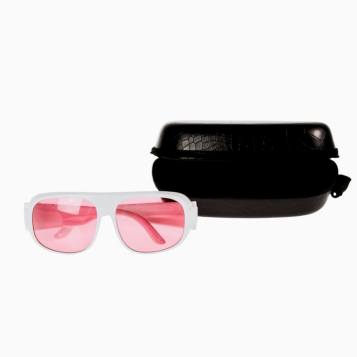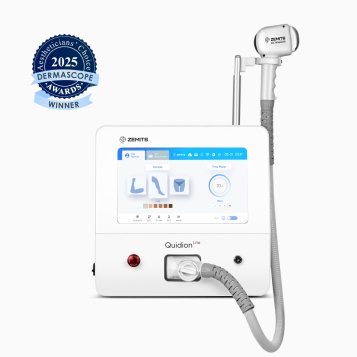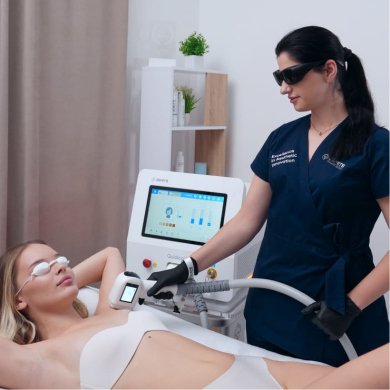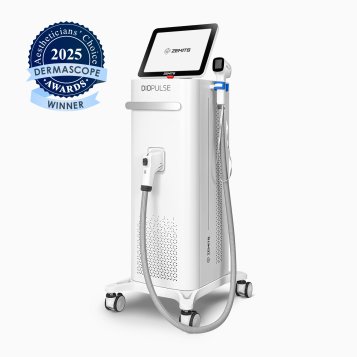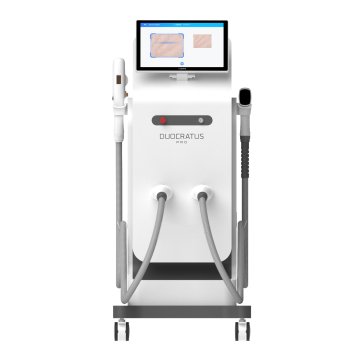Commercial Laser Hair Removal Machines
Hair Removal Laser Machines
As modern technology continues to improve, practitioners can deliver an effective, long-lasting solution for undesirable hair for aesthetic and medical indications through laser and light-based treatments.
- What Is Laser Hair Removal Equipment?
Professional hair removal machines are laser and light-based devices with customizable settings primarily intended for hair reduction. The equipment emits laser onto the skin through a specialized handpiece that aids in performing relatively painless hair removal treatment.
Laser machines vary in features and capabilities. To ensure that the skin is well-protected, some machines, such as the Zemits LaserDio and NobleLaze, are equipped with an internal cooling system that controls the temperature when the laser is fired.
- What Benefits Your Clients Can Get From Laser Hair Removal Machines?
With a laser hair removal machine, your clients can take advantage of the following:
- Instantaneous results - most clients can see permanent hair reduction in approximately three to seven sessions.
- Precision - The treatment selectively targets dark, coarse hair without harming the surrounding skin. It is clinically safe and effective on a wide range of skin tones with zero to minimal downtime.
- Speed - Your clients can save time since the procedure only lasts around fifteen to twenty-five (15-25) minutes.
- Long-term solution - most patients notice lasting results with laser hair removal. Some may need touch-ups, but it becomes manageable and easy to maintain over time.
- Types Of Laser Hair Removal Systems
Several hair removal systems are being utilized today to deliver effective hair reduction through laser and light-based therapy, all of which necessitate follow-up and maintenance treatments.
- Ruby - This is the first functional laser that is widely used up to this day. Although the pain level is lower compared to other laser types, it only targets light pigment which makes it ideal for blonde or thin hair.
- Alexandrite - The Alexandrite laser is considered the fastest laser among all the laser types. The intended use is on fair to olive skin tones and it is more painful than the others.
- Nd:Yag - A newer form of laser, neodymium yttrium aluminum garnet (Nd:Yag) utilizes a topical carbon solution that is applied on the skin to attract wavelengths spectrum, which is then absorbed by the hair follicles. This type of laser hair removal treatment is found to be effective and safe for darker skin.
- Diode - A diode laser emits single light energy that targets the melanin in the hair follicle. The melanin then absorbs the energy, thus inhibiting hair regrowth. This laser works on a wide range of Fitzpatrick skin types.
- Intense Pulse Light (IPL) - Intense pulsed light, is a light therapy used to treat a wide range of cosmetic concerns, such as hair removal, photorejuvenation, and acne removal. It works by penetrating the skin and targeting hair follicles without harming the surrounding skin. The unique characteristic of IPL is the ability to control the wavelength entering the skin, which makes both fair and dark hair good candidates for IPL hair removal.
- How Do Diode Laser Hair Removal Machines Work?
Diode laser fire a single wavelength of light that has a greater absorption rate in melanin. Along with longer pulse widths, it also incorporates surface cooling methods to keep the skin protected from burns. The melanin absorbs the heat, damaging the deep hair follicle bulb, thereby disrupting hair growth. The procedure can be safely administered, thanks to the ability of diode lasers to deliver high-frequency low fluence pulses.
- How Do IPL Laser Hair Removal Machines Work?
Intense pulsed light (IPL) is a form of light source that has a varied wavelength spectrum, allowing the practitioner to implement non-ablative therapies such as hair reduction, photorejuvenation, and acne and pigment removal. Since IPL uses multiple wavelengths, it could lead to unfocused energy around the treated area, resulting in more energy wastage and less selective absorption and thermolysis. Therefore, it is important to emphasize the use of appropriate filtering and treatment techniques so that practitioners can perform cosmetic procedures with ease and accuracy.
Diode Laser Hair Removal Treatment
- What Is Diode Laser Hair Removal Treatment?
Diode laser hair removal treatment operates at a rapid repetition rate at longer wavelengths, resulting in faster treatment of the desired body part. It is the treatment of choice for the removal of dark, terminal hair.
- What Are The Side Effects Of Diode Laser Hair Removal? Does it hurt?
The patient may experience erythema, swelling, skin discoloration, and scarring which may be prevented with proper aftercare. Hair loss may also occur. Very rarely, some patients may develop urticaria. Because the procedure utilizes a sapphire cooling tip, it reduces the heat sensation, resulting in relatively painless treatments.
- How Many Diode Laser Hair Removal Treatments are Needed?
Typically, eight (8) sessions at an interval of four (4) weeks are recommended for significant hair reduction.
- How Long Do Diode Laser Hair Removal Results Last?
The initial results of laser sessions usually last for about two to eight weeks, but it all depends on how fast the hair grows. After completing the treatment regimen, hair may appear thinner and lighter relative to baseline. It also grows less densely and frequently. One to two sessions of yearly maintenance or touch-ups are recommended thereafter.
- Can You Have Diode Laser Hair Removal After Botox?
Ideally, diode laser hair removal should be done prior to botox or patients need to wait for a month.
- Diode Laser Hair Removal Recovery Time
Diode laser treatment has minimal downtime. The patient may expect little to no side effects in a day or two. Applying a cold compress may be beneficial if patients experience sunburnt skin.
- How Long Is Diode Laser Hair Removal Treatment?
Each session lasts about 15-25 minutes, depending on the size of the treated area. Hair removal on a small area, such as the upper lip, only requires a few minutes. Larger areas such as the chest and back will take up to an hour or more.
- Diode Laser Hair Removal Cost in the US
The average cost for diode laser hair removal is around $200 to $800, but it usually depends on factors such as the size of the treatment area, the number of sessions required, the practitioner’s qualifications, and the state where the cosmetic clinic is located.
- Diode Laser Hair Removal Pros and Cons
When developing a treatment plan for patients, it is essential to carefully weigh the pros and cons. The benefits are many, such as elimination of undesirable hair in a gentle way, minimal discomfort, and immediate return to normal routine. The longer wavelength enables targeting of coarse hair and deep penetration in the skin. Large areas can also recover faster. On the other hand, diode laser hair removal may not work on finer hair, which makes people with white, blonde, and grey hair less responsive to laser treatment.
IPL Laser Hair Removal Treatment
- What Is IPL Laser Hair Removal Treatment?
Intense pulsed light (IPL), also referred to as flashlamp therapy, is an aesthetic treatment that uses high pulses of light to reduce future hair growth. It works in the same principle as lasers in a way that light energy is absorbed by the chromophores in the skin.
- What Are The Side Effects Of IPL Laser Hair Removal? Does it hurt?
IPL causes minimal pain, like an elastic band snapping against the skin. Minor side effects include redness, peeling, and swelling. On rare occasions, blistering and hypopigmentation may occur.
- How Many IPL Laser Hair Removal Treatments are Needed?
Most patients may need a course of six to twelve (6-12) treatments, spaced four weeks apart.
- How Long Do IPL Laser Hair Removal Results Last?
After the recommended sessions and with proper aftercare, results can last for years before needing touch-ups.
- Can You Have IPL Laser Hair Removal After Botox?
IPL should be done first before botox, otherwise, the patient should wait for four weeks.
- IPL Laser Hair Removal Recovery Time
IPL reduces hair growth with minimal to no downtime. Aftercare routine which involves avoiding certain activities for the first week or two should be encouraged.
- How Long Is IPL Laser Hair Removal Treatment?
The procedure is usually quick. A small area like the upper lip or eyebrows can be treated in a matter of minutes and longer (15 to 30 minutes) for larger areas such as the chest or back.
- IPL Laser Hair Removal Cost in the US
Practitioners charge anywhere from $45 to $450 per session, depending on the area of the body being treated. Some clinics offer package deals to secure pre-treatment bookings and retain more clients.
- IPL Laser Hair Removal Pros And Cons
The benefits of IPL hair removal for patients are many. The procedure is quick and easy to perform with minimal side effects and no downtime. Moreover, IPL can drastically reduce hair growth and avoid the risk of getting ingrown hair that is common in traditional methods such as shaving and waxing. There are also no limits to the body part you can get IPL hair removal. However, the procedure has a greater impact on darker-skinned patients as they are prone to burns, blistering, and scarring due to the higher rate of hemoglobin and melanin absorption.
Diode Laser Hair Removal Vs IPL Hair Removal
The main difference between the treatment methods outlined above is the way the light source is released. Diode lasers emit a single wavelength while intense pulsed light utilizes a broad spectrum of light energies.
IPL devices deliver 420-1200 nm light energies and utilize filters to refine the energy output. Red and fair hair colors are ideal candidates for IPL treatments using shorter wavelengths, while longer wavelengths can be used on light to medium skin tones with darker hair. Practitioners should not use IPL devices on patients with Fitzpatrick Skin Types 4-6. This makes diode laser more versatile and accommodating than IPL.
Laser Hair Removal Alternatives
Most people are on the lookout for the best hair reduction technique. Here is a rundown of traditional hair removal methods and see how it stacks up against laser treatment:
- Laser Hair Removal Vs Waxing
Waxing is the process of stripping away hair from the root by using a sticky substance, an applicator, and a fabric strip. Laser, on the other hand, is a bit more complex as it involves the use of a device to remove the hair from the roots.
- Experience - Ask every woman you know and they will agree that waxing is very painful. After the wax is applied for a few minutes, it will then be ripped off to get the hair out from the roots. In laser hair removal, mild pain can be felt, like a rubber band snapping against your skin, which is more bearable than the excruciating pain from waxing.
- Results - Waxing requires a quarter of an inch length for the hair to be pulled out. If the hair is too short, then the wax won’t effectively grab onto it. Whether it is done professionally or at home, the result only lasts a few weeks and you have to repeat the process every now and again. On the other hand, significant hair reduction can be observed after several laser treatments. Patients reported being hair-free up to eighteen months before needing touch-ups.
- Cost - Regular waxing sessions might be affordable initially, but the cost can accumulate to thousands of dollars in a lifetime. In contrast, laser hair removal will save you money and time as you only require a few sessions to be able to see long-lasting results.
- Laser Hair Removal Vs Sugaring
Sugaring is another popular depilatory procedure among people with white or grey hair. But does it live up to its hype and is it better than laser?
- Experience - An alternative to traditional waxing, sugaring does not need paper or fabric strips. Instead, a mixture of water, lemon, and sugar creates a sticky paste. Because sugaring only adheres to the hair and not the skin, it may be less painful than regular waxing. But as the paste is pulled, it can produce the same level of discomfort. On the flip side, laser hair removal feels like small zaps onto the skin, which makes it more manageable than both sugaring and waxing.
- Results - Similar to the old-fashioned hot wax, the smooth and silky feel only lasts for about three to four weeks. It could also cause temporary irritation and itchiness, which are common side effects of the procedure. Meanwhile, for laser treatments, one can enjoy the reduction in hair growth after six to twelve sessions.
- Cost - Although laser hair removal might temporarily cause a sticker shock, it is more cost-efficient than monthly sugaring sessions as it effectively impedes hair growth for long periods.
- Laser Hair Removal Vs Electrolysis
Two widely used professional treatment options for hair removal are laser and electrolysis. Although both are known for targeting hair follicles to suppress growth, electrolysis is the only FDA-approved procedure for permanent hair removal. The outcome of laser devices is most accurately described as permanent hair reduction.
- Experience - Electrolysis involves inserting a thin metal probe that releases shortwave radio frequency to destroy hair follicles. It is performed by a dermatologist or electrologist. Most patients describe the sensation as pricking, similar to getting a tattoo. On the other hand, laser treatments emit light energy that is absorbed by the melanin, which then damages the hair follicles to slow down and even impede the growth. The main difference between the two is that laser machines can treat a larger area at once, thus making it faster than electrolysis wherein only one hair shaft is treated at a time.
- Results - Both procedures can get the job done and drastically reduce hair growth after multiple sessions, but electrolysis is more time-consuming, requiring anywhere from fifteen to thirty (15-30) sessions. Because laser hair removal requires fewer sessions, optimal results can be achieved sooner.
- Aftercare - The skin may appear slightly red and irritated after electrolysis, which tends to resolve within a few hours. Follow-up sessions every week or two are needed to treat newly active follicles. The procedure may also produce unsightly pinpoint scabs. For laser hair removal, follow-up treatments can be scheduled four to six weeks apart. When significant hair reduction is obtained, once or twice yearly maintenance sessions can be done. Temporary discomfort is also possible with laser treatments, but it typically disappears within several hours.
- Cost - Cosmetic procedures such as electrolysis and laser hair removal are not covered by insurance. Most clinicians charge around $45 to $200 per session of electrolysis. Typically, the pricing is based on the duration of the treatment. Meanwhile, laser hair removal is reasonably priced at around $200-$800 per session. Regardless of the cost, it is important to consider the patient’s needs to determine the most suitable treatment route.
Performing Laser Hair Removal Treatment
- Who Can Perform Laser Hair Removal Treatment
Each state is unique when it comes to certifications and regulations of who can perform laser hair removal. Generally, dermatologists, nurse practitioners, physician’s assistants, nurses, and laser technicians under direct physician supervision are allowed to carry out the procedure.
- How Long To Wait Between Laser Hair Removal Treatments?
In most cases, an interval of four weeks is recommended. To ensure efficacy, the targeted hair must be in the anagen phase, or when the hair is actively growing.
- Laser Hair Removal Treatment Areas
The most common treatment areas for laser hair removal are the face, upper lip, neck, underarms, legs, bikini line, arms, back, chest, and abdomen.
- Laser Hair Removal Treatment For Ingrown Hair
Pseudofolliculitis, commonly known as ingrown hair or razor bumps, is a prevalent condition among people with dark and coarse hair. As the name suggests, the hair curls back and penetrates the skin with its tip, causing a papule that may lead to inflammation. Shaving and plucking are the main culprits that could be remedied by laser hair removal.
Because the procedure targets the hair follicle directly, it removes ingrown hair for good. After laser hair removal, the treated hair grows thinner and less frequently, thus preventing the existence of unsightly red bumps.
- Laser Hair Removal Treatment For Unwanted Hair Growth
Removing unwanted hair in certain facial and body areas has become a norm for aesthetic reasons. Many women consider it as part of their everyday lifestyle and personal hygiene. For instance, getting rid of hair on the axilla can decrease the chances of sweating in a humid environment. Likewise, ladies can flaunt beautiful skirts and dresses if their legs are hairless, and wear swimsuits confidently in public when they have a bare bikini line.
This is where laser hair removal comes in. Both men and women may feel self-conscious about body hair and having it removed with ease can help boost their self-esteem. The recovery time is minimal and patients can return to their usual routine directly after.
- Laser Hair Removal Treatment For Hirsutism
While some people get treated for cosmetic purposes, for others, it is a way to curb the symptoms of an underlying medical condition. Hirsutism, or excessive hair growth in females, is associated with polycystic ovarian syndrome (PCOS) and hormonal disorders.
Laser hair removal is the treatment of choice to manage excess hair. It has a high efficacy rate and may contribute to improved quality of life among patients.
- Laser Hair Removal Treatment For Keloidal Folliculitis
Acne keloidalis nuchae (AKN), also known as keloidal folliculitis, is a chronic form of folliculitis appearing on the back of the head and the nape of the neck. Symptoms include alopecia, keloidal lesions, and scarring, occurring mostly in African males. Treatment modalities include the prescription of antibiotics and corticosteroids, either oral or topical use. As with other follicular disorders, laser hair removal has shown good efficacy with low recurrence. In one study, clearance of lesions has been observed after four treatment sessions with a diode laser.
- Laser Hair Removal Treatment For Keratosis Pilaris
Keratosis pilaris (KP) is a common skin condition characterized by small, rough papules, often described as chicken skin, affecting the proximal extremities. Although there is no clear etiology, this is caused by the buildup of keratin in the opening of the hair and may occur in individuals with a genetic disorder or existing skin conditions like atopic dermatitis. Usually, the condition resolves on its own gradually or with the help of moisturizing and medicated creams. While diode laser is commonly used in hair removal, it may also improve keratosis pilaris by taking away the keratin along with the hair strands. In a randomized clinical trial, significant improvement was noted after three treatment visits with the 810 nm diode laser.
- Laser Hair Removal Consumables/Expenses
Newer models of laser machines, like the Zemits LaserDio and NobleLaze, do not necessitate costly consumables. Low operating costs mean greater value for your spa business.
Benefits Of Laser Hair Removal Machine For Your Spa Business
Investing in laser hair equipment can add substantial value to your spa business. The most obvious advantage is the opportunity for higher sales and profits. If you already have an established clientele, it can take as early as four to five weeks to reap the benefits. Newer businesses can expect a return on investment in about two months.
When purchasing a laser device, It is necessary to make sure you get the right fit for your client demographic. Offering the latest technology can refresh your brand and allow you to reach a broader segment of the population that will most likely need your services while retaining your existing clients.
- Treatments You Can Perform With Diode Laser Hair Removal Machine
Diode laser machines like the Zemits LaserDio meets the growing demand for safe hair removal technology. Utilizing the appropriate spot size and wavelength, it is effective for the following aesthetic procedures:
- Hair removal on the face and body
- Non-invasive vascular treatments
- Benign vascular and pigmented lesions
- Treatments You Can Perform With IPL Laser Hair Removal Machine
You can treat a variety of skin conditions using an IPL machine such as the Zemits Light Expert, with the correct wavelength:
- Hair removal (750nm-1200nm)
- Acne and pigment removal (430nm-1200nm)
- Freckles, vascular lesions, and facial blemish removal (530nm-1200nm)
- Photorejuvenation (590nm-1200nm)
- Hair removal (640nm-1200nm)
- Instagram Hashtags for Laser Hair Removal Procedure
To stand out from the market, these hashtags can help you connect and engage with your target audience on Instagram:
#laserhairremoval #laser #skincare #beauty #hairremoval #hairfree #ipl #iplhairremoval #hairreduction #laserhairremovaltreatment #smoothskin #laserclinic #medspa #diodelaser #lasertreatment #aesthetics #hairremovallaser #painlesshairemoval #skintreatments #laserhairreduction #nomoreshaving
Summary
Lasers and intense pulsed light devices have become the leading treatment modalities for hair removal. These devices are extremely beneficial for achieving desired aesthetic and clinical effects in a multitude of dermatologic concerns. Lasers produce coherent, high-intensity beams of light, while IPL emits noncoherent light at a multitude of wavelengths.
Conventional hair removal methods such as waxing, sugaring, and electrolysis can be time-consuming, tedious, and painful. Thus, lasers and IPL are the clear winners in terms of versatility, speed, and precision.
Adequate training is necessary to carry out the procedure and yield the best possible outcome. Significant hair growth reduction is noted after a full course of the treatment, with minimal downtime. Minor side effects are expected.
With the availability of cutting-edge hair removal technologies, there is a tremendous opportunity for practitioners and entrepreneurs to make a profitable investment and fill in a need in the market.
The two most popular hair removal devices that are trusted by practitioners and patients today are diode laser and intense pulsed light (IPL). Zemits offers both diode (Zemits LaserDio and NobleLaze) and IPL (Zemits Light Expert) to reduce future hair growth. Aside from hair removal, these devices can be safely used in a wide variety of cosmetic applications.









Connecticut, Delaware, Florida, Georgia, Hawaii, Idaho, Illinois, Indiana, Iowa, Kansas, Kentucky, Louisiana, Maine, Maryland, Massachusetts, Michigan, Minnesota, Mississippi, Missouri, Montana, Nebraska, Nevada, New Hampshire, New Jersey, New Mexico, New York, North Carolina, North Dakota, Ohio, Oklahoma, Oregon, Pennsylvania, Rhode Island, South Carolina, South Dakota, Tennessee, Texas, Utah, Vermont, Virginia, Washington, West Virginia, Wisconsin, Wyoming
















